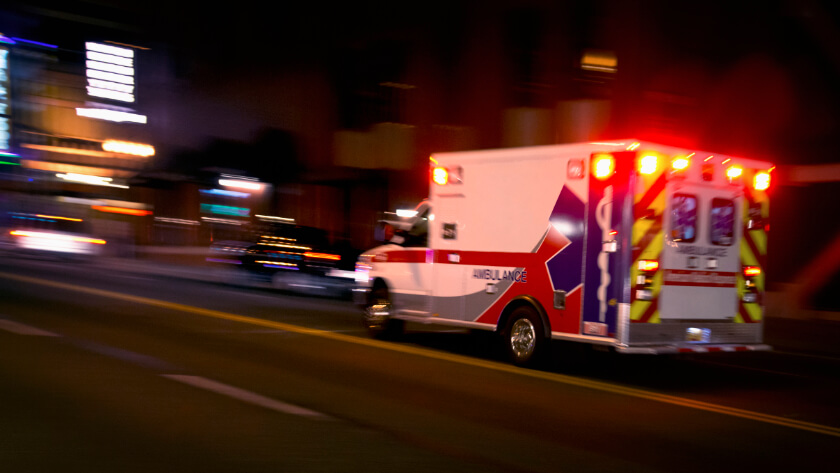
About Damar Hamlin’s Cardiac Arrest
Time seemed to stand still on the football field that night. Football fans and players watched in stunned silence as Buffalo Bill’s Damar Hamlin collapsed on the field after colliding with another player during the first quarter. The players and coaches formed a human circle around the fallen athlete as team doctors performed CPR and used an automated external device (AED) to restart Hamlin’s heart while an ambulance waited. They restored Hamlin’s heartbeat before the ambulance carried the player away.
Hamlin’s Cardiac Arrest
Hamlin had a cardiac arrest, which means his heart stopped suddenly. Cardiac arrests happen when something goes wrong with the heart’s electrical system.
The heart is a muscular organ that pumps blood to the rest of the body. The heart has four chambers – two on top and two on the bottom. The upper chambers, known as the right and left atria, receive blood coming into the heart from the body. The bottom chambers, known as the left and right ventricles, pump blood out of the heart to the rest of the body.
Electrical impulses travel through the heart to cause the heart muscles to contract. Each contraction of the heart muscles push blood through the chambers of the heart and to the rest of the body.
The heart’s electrical system controls heart rate, which is the number of times the heart beats in one minute. It also controls the heart’s rhythm. Cardiac arrest affects the electrical system to either stop the heart suddenly or to cause irregular heart rhythm, known as arrythmia. Arrythmias cause the heart to quiver, somewhat like a bowl of gelatin, instead of pumping blood forcefully and efficiently.
What Causes Someone to Have a Cardiac Arrest?
Anyone – even people with no known heart disease – can have a cardiac arrest. These life-threatening arrythmias usually happen in people with existing heart disease, however. Many cardiac arrests occur in people who have an undiagnosed heart condition.
Heart conditions that can cause cardiac arrest include:
- Coronary artery disease – a condition in which the arteries that deliver blood to the heart become clogged with cholesterol and other deposits known collectively as plaque, which can reduce blood flow to the heart
- Heart attack – often the result of coronary artery disease, a heart attack can trigger arrhythmias; heart attacks can also leave behind scar tissue that can change the heartbeat to cause cardiac arrest
- Cardiomyopathy – also known as an enlarged heart, cardiomyopathy occurs when the walls in the heart muscle stretch, which causes the muscle to get larger or thicker
- Heart valve disease – narrowing or leaking of the valves that help keep blood flowing in the right direction within the heart; a tight or leaking valve causes stress to the chambers of the heart, which then become enlarged and weakened in ways that make them prone to arrythmias
- Congenital heart defects present at birth
- Long QT syndrome (LQTS) – an abnormal arrythmia that can cause fast, chaotic heartbeats
Certain factors can increase the risk for cardiac arrest. These risk factors include:
- A family history of coronary artery disease
- Smoking
- High blood cholesterol
- High blood pressure
- Diabetes
- Obesity
- An inactive lifestyle
Other factors can contribute to the risk of cardiac arrest, including:
- Personal or family history of cardiac arrest
- Previous heart attack
- A personal or family history of other forms of arrythmias, heart failure, and congenital heart problems
- Age – the risk for cardiac arrest increases with age
- Gender – Being male
- Using cocaine, amphetamines or other illegal drugs
- Low magnesium or potassium levels
- Obstructive sleep apnea, which is a sleep disorder
- Chronic kidney disease
What Caused Hamlin’s Cardiac Arrest?
It is not clear whether Hamlin had a pre-existing undiagnosed heart condition or risk factors that contributed to his cardiac arrest. Most certainly, he will undergo extensive medical tests to look for signs of a heart problem.
Many doctors suspect the cardiac arrest occurred as the result of a sudden blow to the chest when he was tackled just moments before. Heart doctors refer to this as commotio cordis. Blunt trauma to the chest at specific time during the heart rhythm can actually change the heart rhythm without causing structural damage to the heart.
Determining if Hamlin’s cardiac arrest was the result of commotio cordis may be difficult, as most commotio cordis diagnoses are made during an autopsy when doctors have ruled out all other potential causes of arrhythmias.
Cardiac arrest usually happens in otherwise healthy athletes who have one of two common heart conditions – hypertrophic cardiomyopathy or abnormalities in the structure of a coronary artery. Hypertrophic cardiomyopathy is a condition in which the walls of the heart thicken; hypertrophic cardiomyopathy can also cause arrhythmias.
The best way to determine if you have a heart condition that can lead to a cardiac arrest is to see your doctor and undergo testing, such as calcium scoring.




